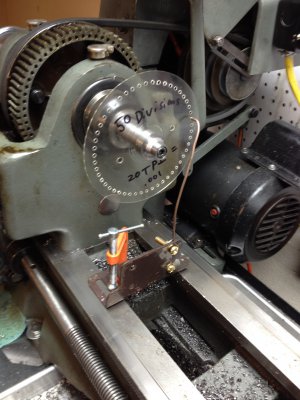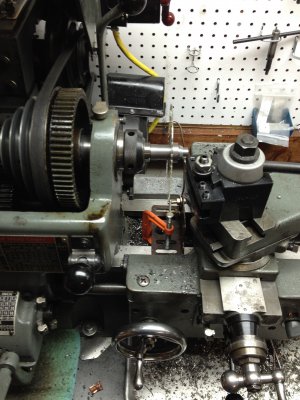Thanks for all the answers guys. I didn't even think about printing out a division wheel. When I initially posted this question, my thoughts were to use the indexing plates that came with my rotary table, of which I have several, but it seems that I would end up with the last tooth being off by a very little, but it seemed very complicated to me.:nuts:
I use this printable "wheel divider":
http://www.cgtk.co.uk/metalwork/divider
Just enter 113 elements and print it out, glue it to something and attach to your spindle or ??? Modify the print size to make it fit your diameter.
I like this solution the best, a simple solution for a simple mind, like me.

)
Can you not use a set up for 226 divisions and skip every other hole?
I don't see how that would make it easier....why not just use the 113 holes and be done with it? I guess the math might be a little easier, but with the printable wheel, who cares.

)
This was gonna be an exercise with my divider plates, but quite frankly, I'd rather do it the easiest way possible. To that end, I already have a 113 tooth gear that I can use to index off of for this particular gear, but I also want to do a few others. There's a 127 tooth gear that I want to make and also a 71 tooth gear that I don't have patterns to work off of.
The gears are metric 1.5 module with a 20 degree pressure angle. I just ordered the cutter set. This will be my first gear hobbing experience, this should be interesting. Figuring out the Blank size OD is not a big deal using the formulas in the Machinerys Handbook.
Thanks again guys.
Marcel



